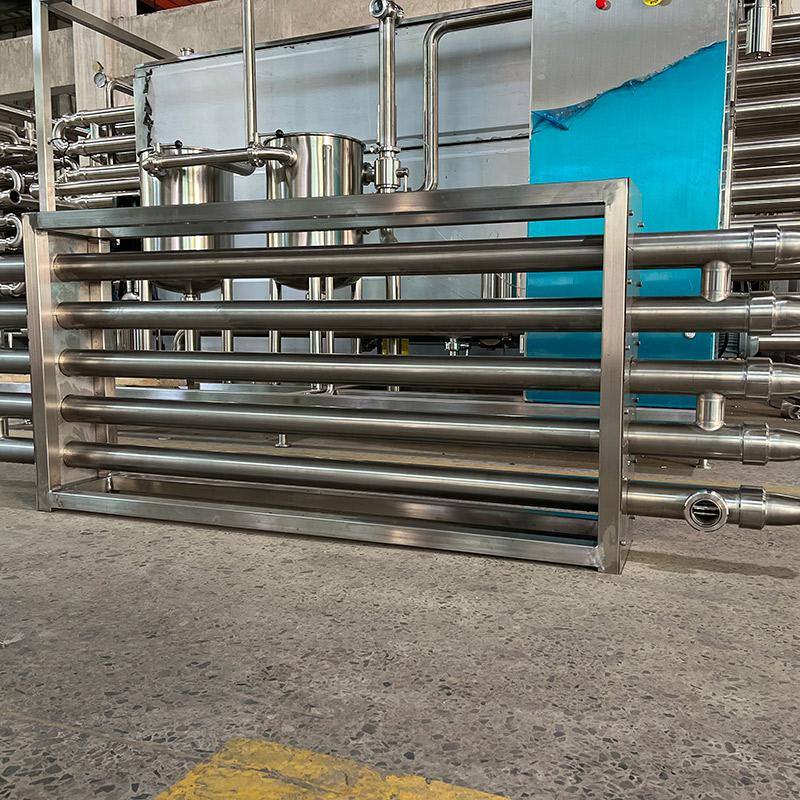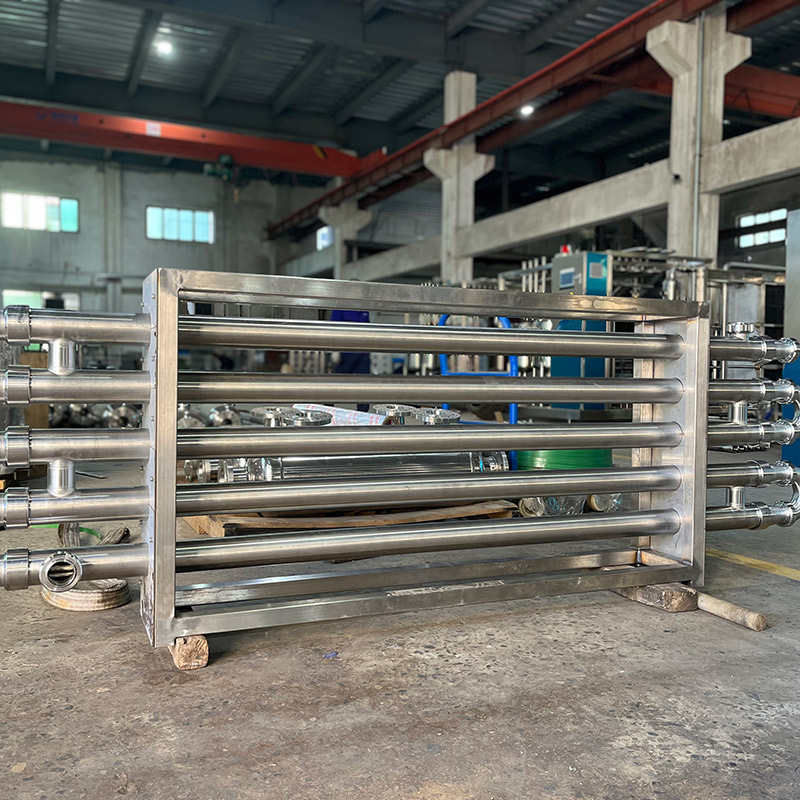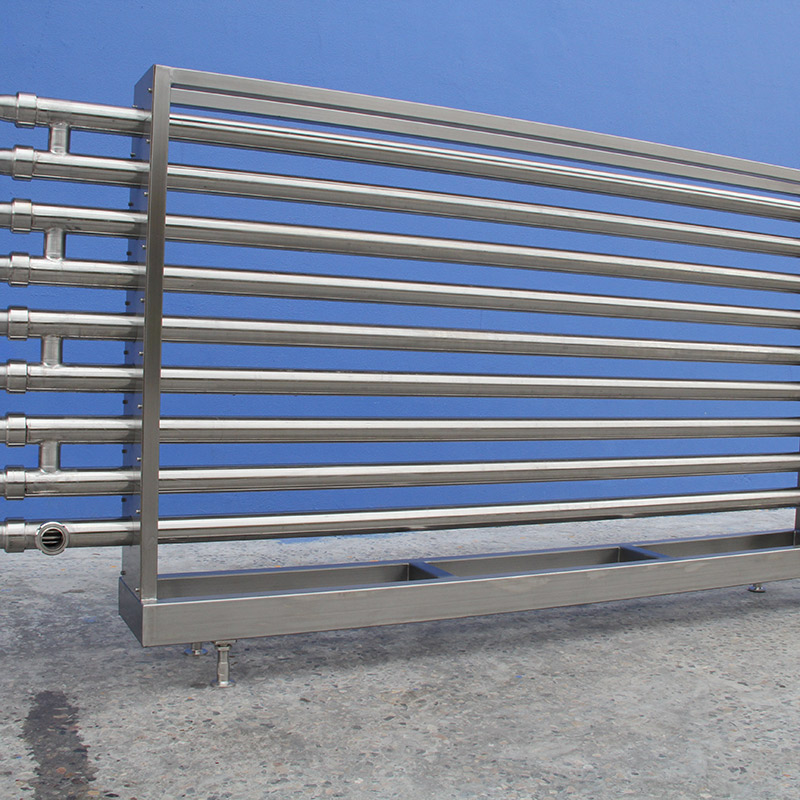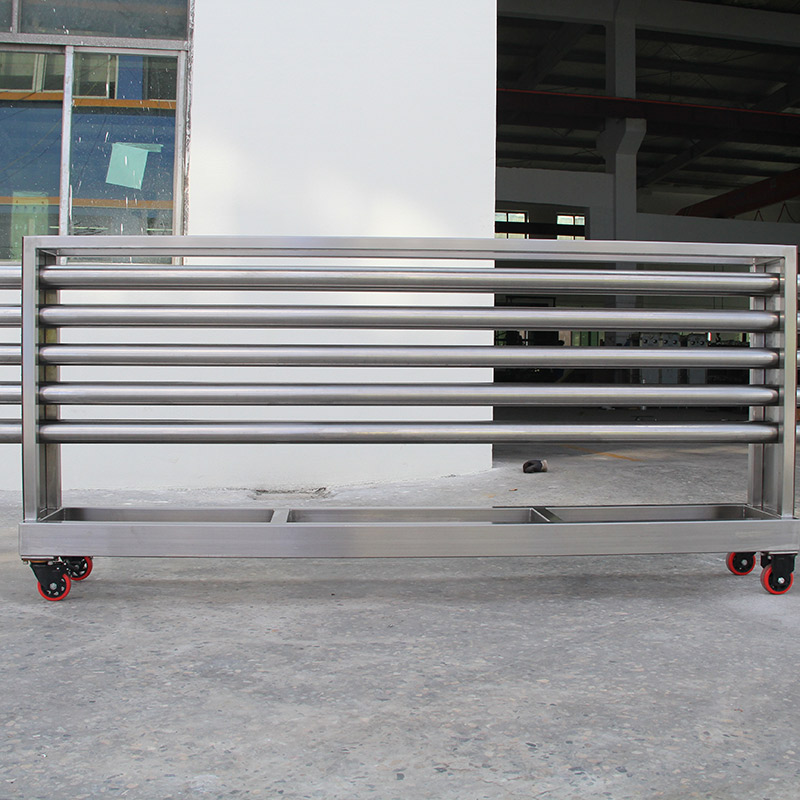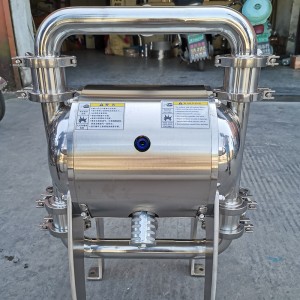
Products
Tube and tube heat exchangers
Product description
Tube and tube heat exchangers are widely used in chemical and alcohol production. It is mainly composed of shell, tube sheet, heat exchange tube, head, baffle and so on. The required material can be made of plain carbon steel, copper or stainless steel. During heat exchange, the fluid enters from the connecting pipe of the head, flows in the pipe, and flows out from the outlet pipe at the other end of the head, which is called the pipe side; another fluid enters from the connection of the shell, and flows from the other end of the shell. One nozzle flows out, which is called a shell-side shell-and-tube heat exchanger.
The structure of the shell and tube heat exchanger is relatively simple, compact and cheap, but mechanical cleaning cannot be performed outside the tube. The tube bundle of the heat exchanger is connected with the tube sheet, the tube sheets are respectively welded to the two ends of the shell, the top cover is connected with the top cover, and the top cover and the shell are provided with a liquid inlet and a water outlet pipe. A series of baffles perpendicular to the tube bundle are usually installed outside the tubes of the shell and tube heat exchanger. At the same time, the connection between the tube and the tube sheet and the shell is rigid, and there are two fluids with different temperatures inside and outside the tube. Therefore, when the temperature difference between the tube wall and the shell wall is large, due to the different thermal expansion of the two, a large temperature difference stress will be generated, so that the tubes will be twisted or loosened from the tube plate of the shell and tube heat exchanger, and even the heat exchanger damage.
In order to overcome the temperature difference stress, the shell and tube heat exchanger should have a temperature difference compensation device. Generally, when the temperature difference between the tube wall and the shell wall is greater than 50°C, for safety reasons, the tube and tube heat exchanger should have a temperature difference compensation device. However, the compensation device (expansion joint) can only be used when the temperature difference between the shell wall and the pipe wall is lower than 60~70°C and the shell side fluid pressure is not high. Generally, when the shell side pressure exceeds 0.6Mpa, it is difficult to expand and contract due to the thick compensation ring. If the effect of temperature difference compensation is lost, other structures should be considered.
The eddy current hot film of the shell and tube heat exchanger mainly adopts the eddy current hot film heat transfer technology, which increases the heat transfer effect by changing the fluid motion state. Up to 10000W/m2℃. At the same time, the structure realizes the functions of corrosion resistance, high temperature resistance, high pressure resistance, and anti-scaling. The fluid channels of other types of heat exchangers are in the form of directional flow, forming a circulation on the surface of the heat exchange tubes, which reduces the convective heat transfer coefficient.
